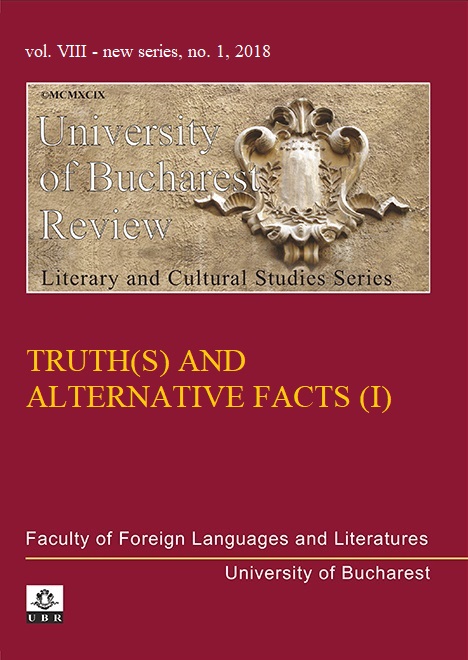FORGERIES, FALSEHOODS AND FIGURATIONS:
READING TRUTH(S) IN
PETER ACKROYD’S CHATTERTON
FORGERIES, FALSEHOODS AND FIGURATIONS:
READING TRUTH(S) IN
PETER ACKROYD’S CHATTERTON
Author(s): Fabian IvanoviciSubject(s): Philology
Published by: Editura Universităţii din Bucureşti
Keywords: hermeneutics; plagiarism; influence; postmodernism; writing;
Summary/Abstract: Truth, always the embattled realm, is at the core of Ackroydian novels. Its nuances and delineations, its vagaries and fluctuations, make up the crux of Chatterton (1987), a novel which proposes a motley, synoptic construction of truth.Deeply tied with issues of self and self-effacement, it is a destabilizing force,engendering anxiety through its frightening potential, creating a space that negates identity. Under constant threat of rewriting, the self becomes a matter of caprice,seeking footholds in notions of originality and forgery, in obsessions with roots and root causes, to provide a second, more reliable Truth, free from the confines of ambiguity. This is a hermeneutic effort par excellence, in that it enforces a frantic reinterpretation of the past and its artifacts: whether through poet Chatterton or novelist Scrope, ruminations on plagiarism and literary influence suffuse the text,never affording a clear-cut conclusion, offering mere hints in tantalizing directions.My paper will investigate these places of lived tension through the lens of hermeneutic theories, as provided by Paul Ricoeur, Hans-Georg Gadamer, Merold Westphal, David Couzens Hoy, and others, in order to shed light on the precarious interplay of truth and falsehood, and their configurations within the novel.
Journal: University of Bucharest Review. Literary and Cultural Studies Series
- Issue Year: VIII/2018
- Issue No: 1
- Page Range: 34-43
- Page Count: 10
- Language: English

